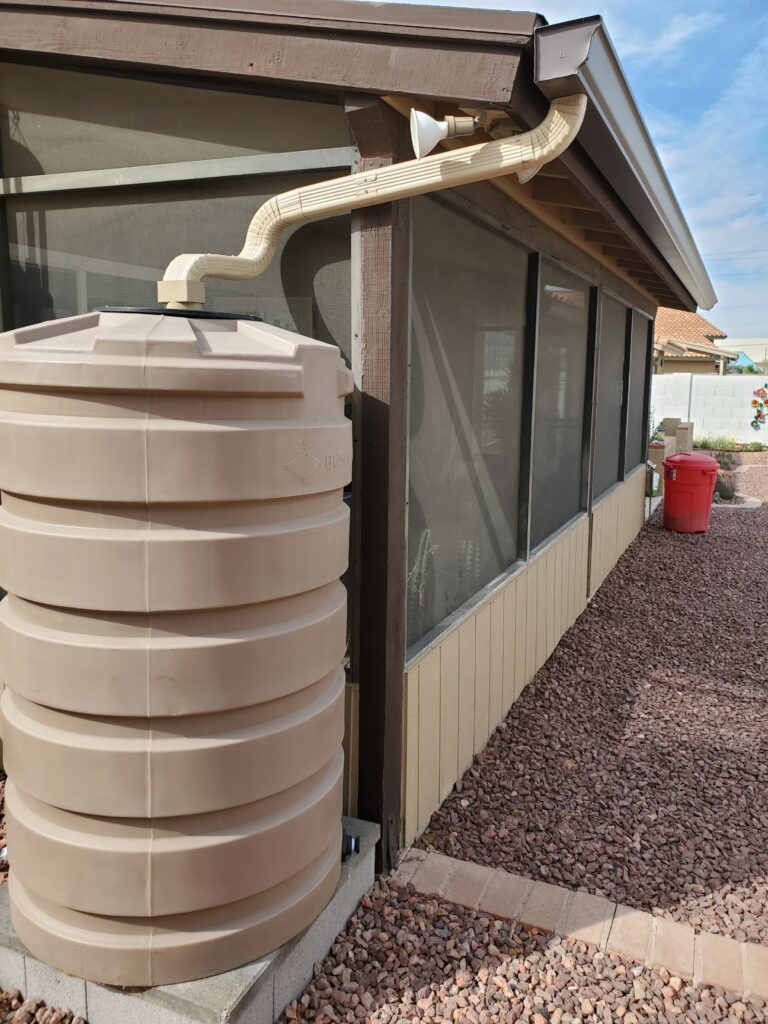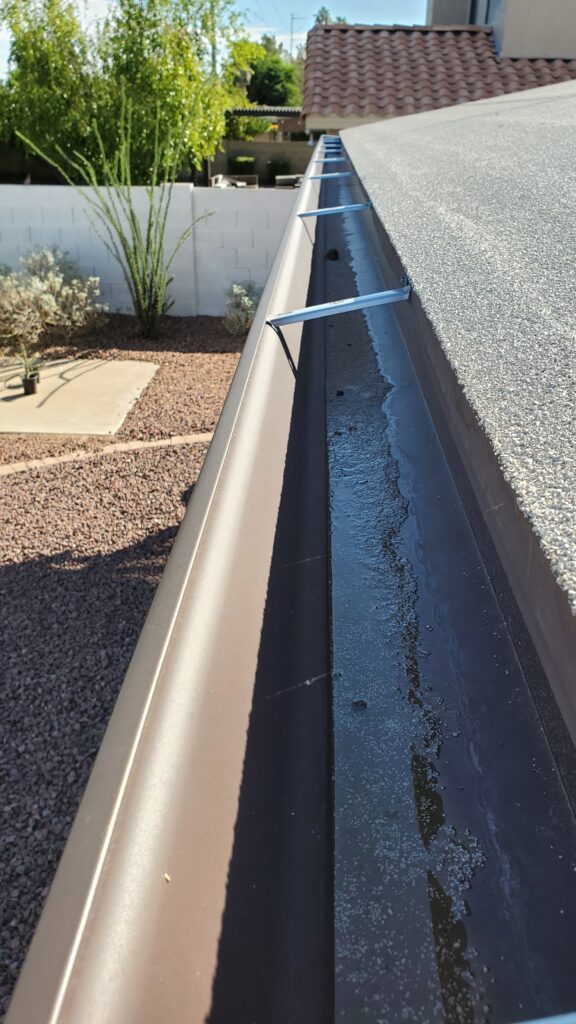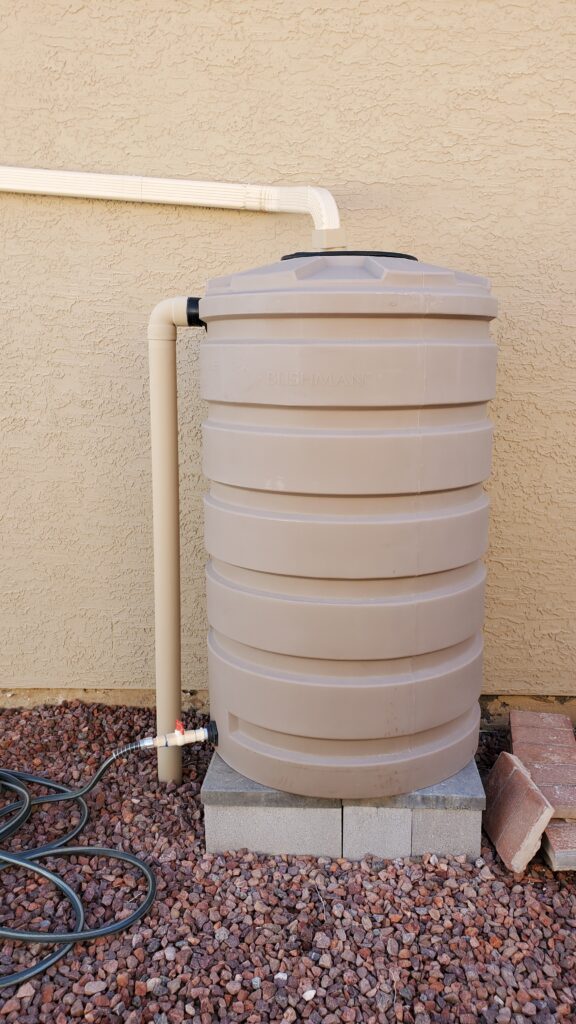
Water harvesting using a system of roof gutters and holding tanks can be an effective method for saving rainwater for periods of drought. Most houses in the desert do not have gutters installed unless there was a problem with drainage. Typically they just rely on overhangs and flashing to prevent the water from running down the walls. When it rains, the water runoff falls a few feet from the foundation of the house (unless there is wind). If the ground is not graded properly it can pool near the house and damage the foundation. Having large amounts of water near the foundation of your house can also attract termites and tree roots. With gutters installed, you have better control over where this water goes. It can be routed into holding tanks or into earthworks, such as a berm and basin.

Two years ago, I had a full set of gutters installed in the front and back of my home for only $1500. Of all of the upgrades I have purchased for my home, this was the most useful and the best value for the money. Before the gutters were installed, I setup two 205 gallon Bushman holding tanks in my backyard. I used 8 cinder blocks and 4 large pavers to create a solid base for the tanks. The tanks need to be raised up above ground level so that the spigot can be accessed for attaching a hose or filling a watering can. The added height also increases the water pressure in the hose, which is proportional to the height of the water in the tank. I installed a metal 90 degree spigot on one tank and a PVC straight ball valve on the other. I found the PVC based valve to be easier to keep from leaking because it is straight, so it doesn’t tend to twist as easily. However, the PVC sticks out more and is prone to discoloring in the sun.

The tradesmen who installed my gutters routed the backyard downspouts into the rain tanks that I had setup. The only difficulty I had with this setup is that the downspout is not flexible, so it is difficult to remove the lid of the tank to clean the leaf filter. The lid is important because the hot dry air in Arizona would cause major evaporation if my tanks were not properly sealed.
Initially, I had setup the overflow pipe to drain excess water to an underground drainage basin. This did not work out well. In heavy rains, the underground basin could not handle all of the water because the desert clay soil drains too slowly. The area would flood and the basin would collapse in on itself. Thinking of a better approach, I would like to use larger tanks and route the overflow away from the house above ground level. Ideally, routing the overflow into a basin would be nice, but I have walking paths in the way.
It takes about 1/2″ of rain to fill my tanks from empty to full. I use a hose with a ball valve attachment to create a slow-dripper that I can use to give a deep soaking to some of my desert plants. I also fill up buckets and jugs with small holes punched in the bottom to create portable drip irrigators. Using a watering can is useful for potted plants but not plants in the ground. The desert clay soil is very slow for water to permeate, so the water just runs off the surface when you try to use a watering can.
If you are thinking of installing a gutter & tank system, you can estimate the harvested water using the calculator here. If you live in a residential area you may need to consider the size of your space and the view from the street/neighboring yards when selecting a tank size. Choosing a color that matches your house and/or yard will also help to blend-in a large tank.
